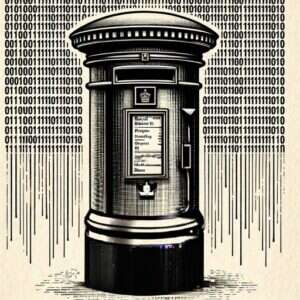
The England and Wales Cricket Board’s data lake and elite performance Depth app, developed by the technology team and its partners, has been credited with helping the England men’s team secure a 3-0 one-day international victory against Pakistan in the summer.
England had been due to begin the series in Cardiff on Thursday 8 July, but Covid-19 tests administered on Monday 5 July returned seven positive results meaning the entire party of players and support staff were required to self-isolate. By Tuesday 6 July however, the ECB had named an entirely new 18-man squad which went on to win all three matches.

The ECB’s Depth app – built on a low-code platform – allowed selectors for July’s international against Pakistan to draw up a new squad in hours. (Photo by TOLGA AKMEN/AFP via Getty Images)
England and Wales Cricket Board’s Depth app
The Depth app started life as a bowling coaching tool originating from the Elite Performance Centre in Loughborough. It was picked up by men’s cricket performance director Mo Bobat as the basis of a tool to aid selectors to pick the England team – making selection more fact-based “rather than on gut instinct”.
The app draws from ECB’s data lake, together with its vast library of video archives, and integrates up-to-date data from other applications including the medical records system to provide a player’s injury status. If a cricketer has been playing in a match that is being scored using the ECB’s Play Cricket Scorer app, their performance data is updated in close to real time.
With all this data in one place, selectors can call up the “depth charts” and compare players by category, whether bowlers, wicket-keepers or other roles, as well as gauging a players’ ‘current readiness’ and ‘future potential’.
In July, the app – along with some frantic messaging to county CEOs to check they would make their players available for international duty at such short notice – meant that a new squad could be selected in a matter of hours, Bobat says.
“Previously, this would have been done by the performance analysis team collating information and outputting it to a huge spreadsheet, with the information only caught up to a point in time and missing more recent player performances, and missing other information such as player availability due to injury,” he explains. “The process would take days to collate information and it was not all in the right place at the right time.”
Beyond boundaries
While the sport has a rich history of statistics and records – for decades the annual Wisden Cricketers’ Almanack has run to well over 1,000 pages – Bobat says the game has become much more data-driven in recent times. “We are now seeing players being selected based on proven skills, who may have previously been overlooked because the data was not readily accessible, or the best players being bypassed because of unconscious bias, be that favourable or otherwise,” he says.
We are now seeing players being selected based on proven skills, who may have previously been overlooked because the data was not readily accessible.
Mo Bobat, England and Wales Cricket Board
As the governing body of all forms of cricket in England and Wales, the ECB is the administrator of all levels of the game from village cricket upwards to the England international teams. Technology director Graeme Reid says that culture of the organisation encourages the IT department to tackle challenges on the wicket, beyond the boundary, and at all levels of the game.
“The ECB promotes working together to be better and to be involved, so this helps avoid departmental silos,” he says. “We turn problems into opportunities and actively encourage innovation.
“The technology department is seen very much as an enabler of ideas by ensuring that the infrastructure is in the right state to accept new sources of information, and join it all up into a single and up-to-date view.
“The ECB has a small technology team to help develop the game, and utilise and manage external sources to ‘keep the lights on’ in the IT world. We engage with our technology partners and explore new concepts such as AI and ML, and then show this capability and the opportunities it brings to the wider business.”
Low code at the England and Wales Cricket Board
The Depth app had been developed using Outsystems’ low code platform. “Over the last four years the tool has become even more feature-rich, with the team at the performance centre in Loughborough having direct input into its development roadmap and seeing the results within days,” explains Robert Wilkinson, elite applications technology project manager.
The “rapid development and relatively low cost of investment” that this low-code approach allows helped to ensure that “international cricket was delivered on schedule – despite the pandemic – and helped protect the ECB’s broadcasting revenue at this critical time,” adds Reid.
The low-code platform has also been applied to the ECB’s back-office applications, helping the Board streamline its investment in grassroots cricket. The ECB replaced its legacy grants and loans system with a new low-code app, which handles “eight times the volume of grant applications with only 75% of the original team of administrators,” according to Claire Gooch, head of facilities investment at the ECB.
This has helped save cricket clubs from going bust.
Claire Gooch, England and Wales Cricket Board
“This has enabled millions of pounds to be paid out from our charity arm, The England and Wales Cricket Trust, to keep recreational cricket in existence during the Covid lockdown. If a recreational club goes to the wall, typically it never comes back. We wouldn’t have had the scope to do this based on the old legacy system. This has helped save cricket clubs from going bust during this difficult time.”
Getting started with low code
For tech leaders considering low-code, Wilkinson recommends starting small with internal IT proofs of concept before tackling big business challenges. “Start on something really simple, involving a small team,” he says. “This could be a multi-meeting room booking system, or a simple time management system to work out how much technology time is spent on support, projects, incident management and change requests.
“Pick anything, but keep it simple. See your result in a week, and then iterate to include improvements. Think Agile, and get the developers to sit next to the subject matter experts and work through the design.
“Then start thinking of innovative apps that could be trialled. See if an idea is a good one or a non-runner. You’re only spending a little bit of resource to get to a proof of concept. If something doesn’t work, make quick decisions: modify to make it work, or scrap it.
“Innovation doesn’t have to drain the whole budget – you can walk away with minimal spend, or decide to invest a bit more to get an idea to work.”






